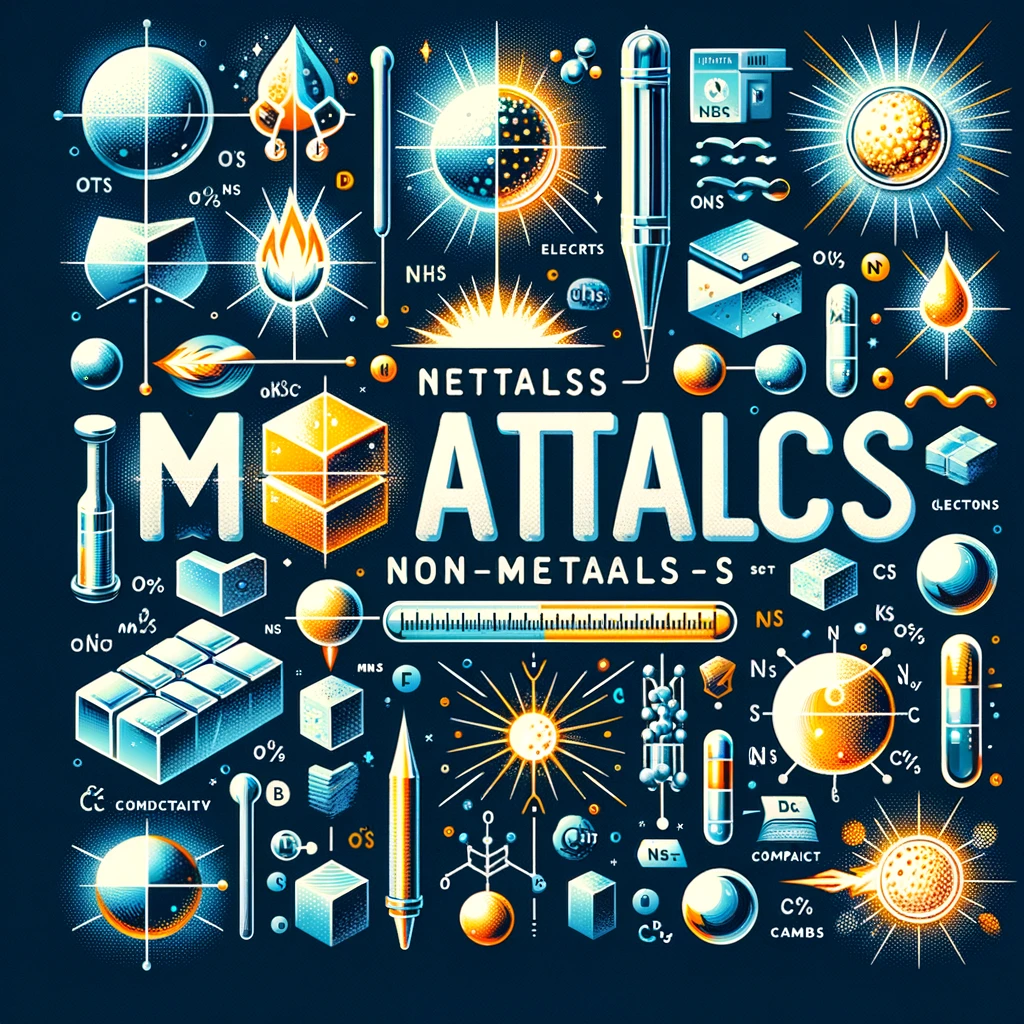
Unraveling the Mysteries of Metals and Non-metals: A Detailed Guide for Class 10 Science

Introduction
Metals and non-metals are two categories of elements that exhibit distinct physical and chemical properties, playing a vital role in various aspects of the natural world and human-made inventions. This chapter explores their characteristics, reactions, and the significance of their compounds.
Section 1: Properties of Metals and Non-metals
Understanding the fundamental differences between metals and non-metals is crucial for recognizing how these elements interact with their environment and each other.
Properties of Metals
- Physical Properties: Metals are typically shiny, malleable, ductile, and good conductors of heat and electricity. Examples include iron, gold, and aluminum.
- Chemical Properties: Metals tend to lose electrons, forming positive ions. They react with oxygen to form oxides and can displace hydrogen from acids.
Properties of Non-metals
- Physical Properties: Non-metals are not shiny, not malleable, and are poor conductors of heat and electricity. Examples include sulfur, carbon, and nitrogen.
- Chemical Properties: Non-metals tend to gain or share electrons when reacting with other substances, forming negative ions or covalent bonds.
Section 2: Reactivity of Metals
The reactivity series of metals is a list of metals arranged in order of their reactivity with other elements, particularly oxygen, water, and acids. This series is crucial for predicting the outcomes of reactions involving metals.
Extracting Metals from Their Ores
- Metallurgy: The process of extracting metals from their ores and refining them for use. The method used depends on the metal’s reactivity.
- Electrolysis: Used for the most reactive metals, where electricity is used to reduce metal ions to metal.
- Reduction with Carbon: Less reactive metals can be extracted by reducing their oxides with carbon or carbon monoxide.
Section 3: Compounds of Metals and Non-metals
Metals and non-metals form a variety of compounds, each with unique properties and uses.
Ionic Compounds
- Formed when metals react with non-metals, transferring electrons from the metal to the non-metal.
- Characteristics include high melting and boiling points, and they conduct electricity when molten or dissolved in water.
Covalent Compounds
- Formed by the sharing of electrons between non-metals.
- Typically have lower melting and boiling points than ionic compounds and do not conduct electricity.
Conclusion
The distinction between metals and non-metals and their respective properties is fundamental to understanding the material world. Their reactions and the compounds they form are central to many processes in both nature and technology.
Call to Action
Experiment with simple reactions involving metals and non-metals to observe their properties firsthand. Investigate the uses of different metal and non-metal compounds in daily life and technology.